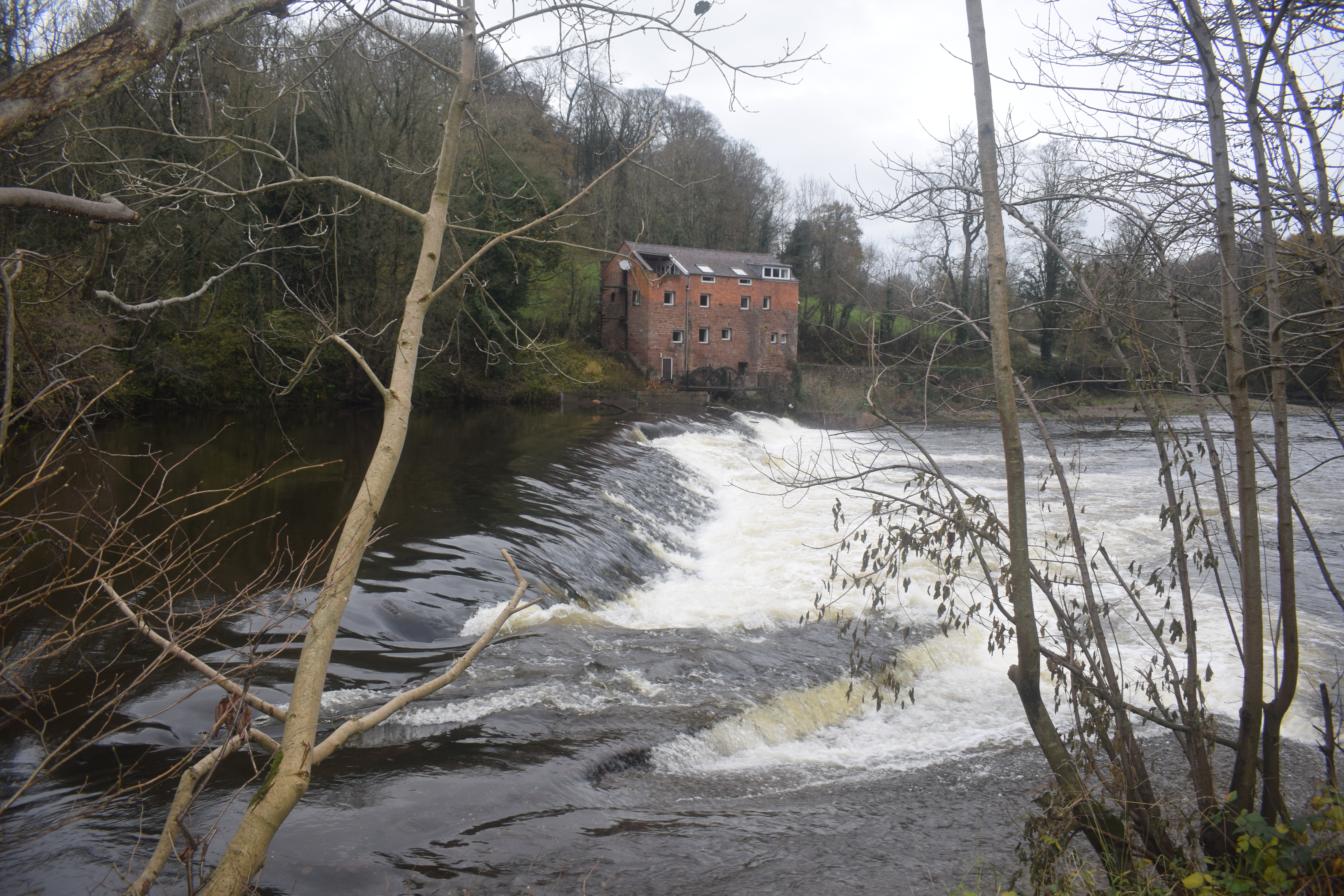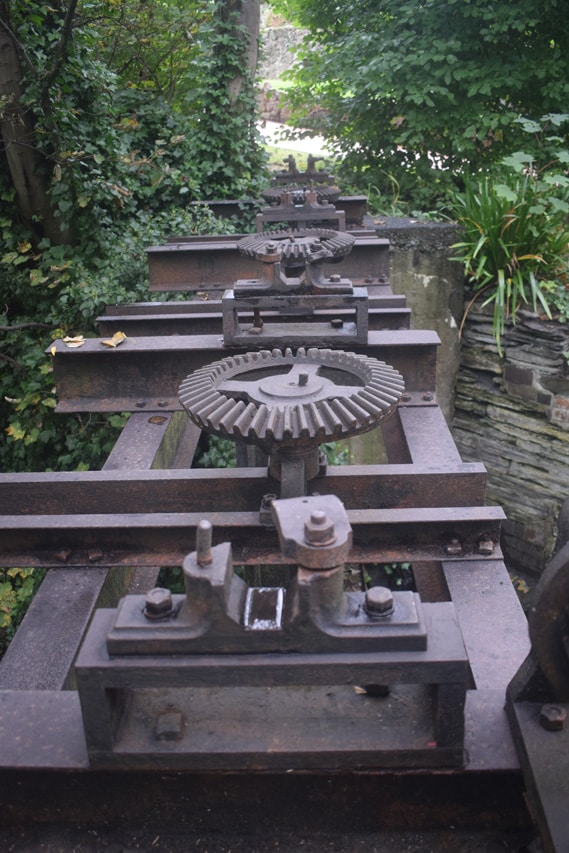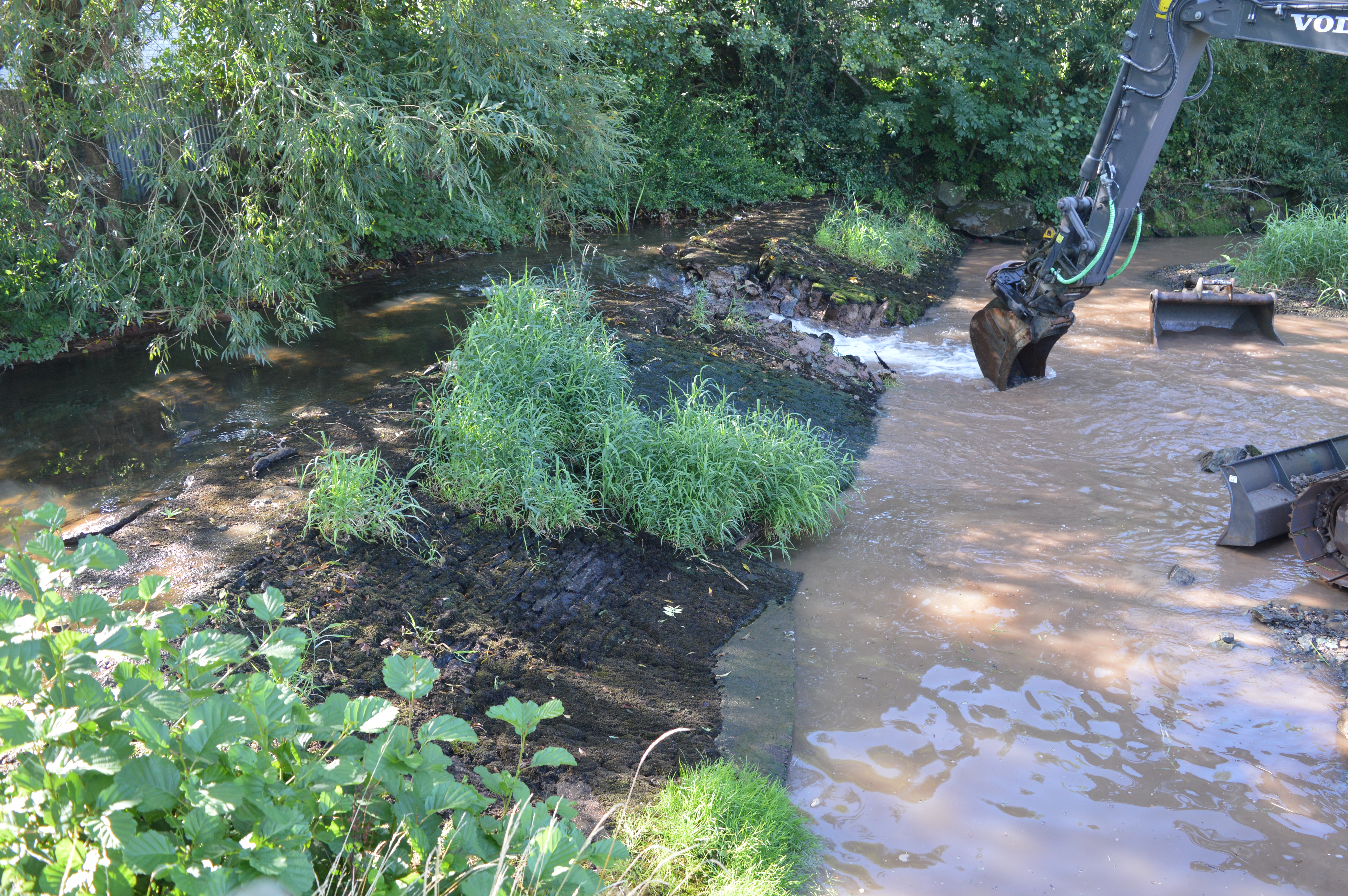Weirs
Our field team have recently undertaken several projects recording a number of historic weir structures. Erbistock Weir, located on the River Dee near Erbistock, Wrexham was associated with a flour mill which, along with a mill leat and water wheel, are still in situ. The mill and weir may have early medieval origins, although the present mill dates to 1603 and the weir was rebuilt sometime in the 20th century, during which time it was still required to drive the turbine that provided electricity for Llangollen.
Erbistock weir is a large structure, and this has had a severe impact on approximately 1km of river flow and sediment patterns around the structure. A design to improve fluvial and ecological connectivity at Erbistock was put forward to improve fish passage and sediment transfer, restore pool riffle sequences upstream of the weir and reduce flood risk in the channel upstream. To achieve this, around two thirds of the weir will need to be removed. On behalf of Natural Resources Wales, CPAT, in advance of the weir modifications, undertook a detailed structural survey of the weir and mill race.
Shipton Weir, located within the River Corve in Much Wenlock most likely dates to the 18th century and served to increase the water level for Broadstone Mill, Munslow, which ceased operation in 1930. To improve naturalised flows and the unimpeded migration of fish species to complete their life cycles and allow for restored natural river processes and habitats, a project to lower the weir was recently put forward by the Shropshire Wildlife Trust. As part of the project, CPAT recorded the weir structure and monitored its partial removal.
In Llangollen, to the east of the bridge, proposals have been put forward by Denbighshire County Council to remove a 4m long section of Llangollen Lower Weir to allow safer passage for fish, canoes and rafts. The visible structure of the weir had been largely rebuilt in concrete and was in a very dilapidated condition. Our field team undertook a level 2 building survey in advance of the works, recording the weir structure, an associated sluice gate and revetment.
The weir in Llangollen dates from around 1805 and was constructed to provide a water supply to additional power to the Lower Dee Mill’s Factory, a cotton mill on the north bank of the River Dee. While part of the mill complex was powered by water supplied from the newly opened section of the Ellesmere Canal, the weir was constructed to form a mill pond that would feed two water wheels via a leet running parallel to the river along the northern bank. A sluice gate was fitted at the western end of the leat to control the water flow. The Lower Dee Mill remained in use until the early 1960’s and during the early 20th century, a turbine was installed in the mill leat by the Llangollen and District Electric and Power Company to provide electricity for Llangollen.
Linney Weir, which extends across the River Corve in Ludlow is another example where we have been required to undertake survey work and a watching brief in connection with the removal of the central section of the weir to allow for safer fish passage. There is believed to have been a mill and weir at or around this location since the 13th century, although the present weir is thought to date from the 18th or 19th century. As well as undertaking some documentary research on the weir, our team also carried out a photographic survey of the remains and monitored the partial removal of the weir structure, from which it was possible to determine the method and possibly the phases of its construction.




